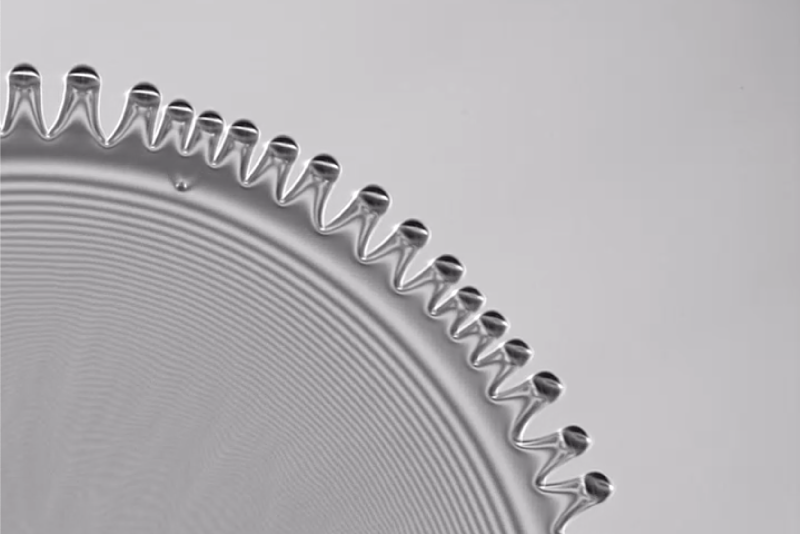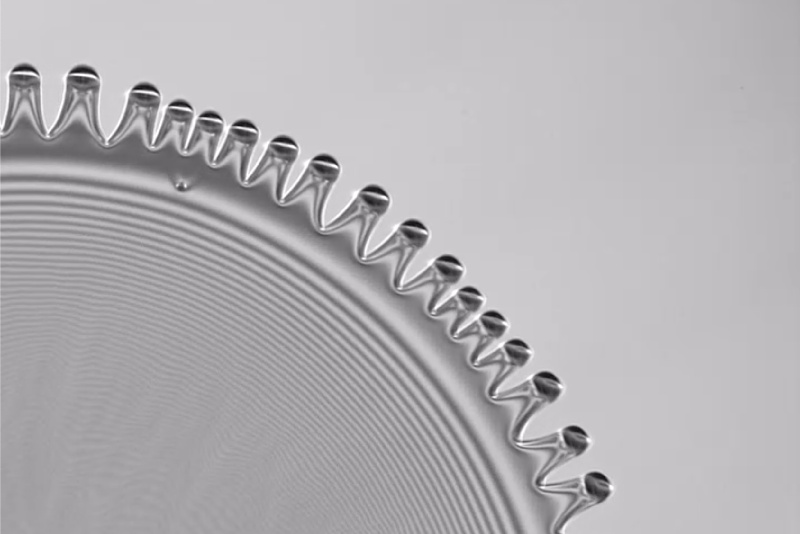Video—Stretching Fingers on a Puddle’s Edge
When a liquid containing particles evaporates, a ring of residue like a “coffee ring” may be left behind, but what if the dissolved component is another liquid? Researchers produced videos addressing this question, showing that the edge of the puddle remaining after a volatile solvent evaporates forms either “fingers,” or spherical “pearls,” or some combination of the two.
Justin Burton and his colleagues at Emory University in Atlanta used 1-microliter drops of the volatile solvent isopropyl alcohol mixed with varying amounts of more slowly evaporating solutes such as ethylene glycol or dodecane. They deposited the drops on a silicon surface illuminated with monochromatic light, which allowed them to observe light and dark bands produced by wave interference and thus determine the thickness profile of the liquid at each point in time.
The observed edge shapes depended on the difference in surface tension between the two fluids. In the typical scenario, as the drop spreads, the volatile solvent evaporates most rapidly at the edge, where the fluid is thinnest, leaving a higher concentration of the solute liquid behind in a narrow “rim” region. If the fluids’ surface tensions are very different, this rim generates an outward flow, a phenomenon known as the Marangoni effect. The flow leads to fingers of solute that advance outward until the solvent fully evaporates, leaving a thin film of solute behind. If the fluids’ surface tensions are similar, the Marangoni effect is suppressed, and larger droplets form out of the rim, along with an array of droplets in the wake of the receding, evaporating solvent.
After the solvent is gone, the remaining solute puddle can have a constant, submicrometer thickness, which is surprising, Burton says. “When we first started looking at our results, I was struck by how uniform and large the films were after deposition.” So he says that controlling the Marangoni effect with an appropriate mixture of liquids could provide researchers with a new way of making thin films “on the cheap” for a wide range of experiments.
This research is published in Physical Review Letters.
–David Ehrenstein
David Ehrenstein is a Senior Editor for Physics Magazine.





